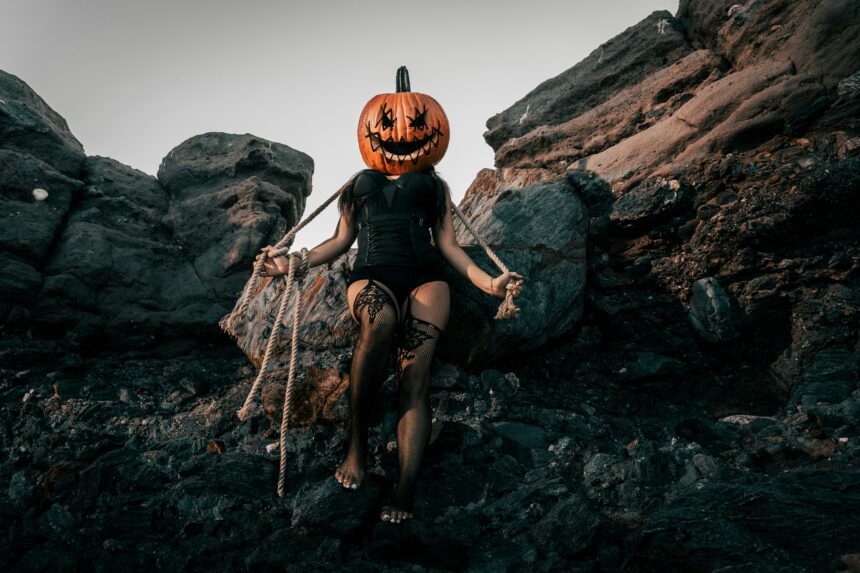Photo by Daniel Lincoln on Unsplash
It’s almost impossible to walk into a Halloween store without stumbling into a wall of sequins, corsets, and miniskirts. Somewhere between the Mean Girls “I’m a mouse, duh” reference and today’s TikTok trends, women’s Halloween costumes became almost exclusively about how much skin they reveal—no matter the character. Nurse? Miniskirt. Zombie? Miniskirt. Darth Vader? Somehow… miniskirt.
It’s easy to laugh about the absurdity of it all, but the reality is that this isn’t just about “fun” or “confidence”—it’s about a commercialized version of female sexuality designed through the lens of the male gaze. Halloween has evolved into a night where women are culturally encouraged, even expected, to perform a hyper-sexualized version of themselves, whether they want to or not. This pressure is not just a college campus phenomenon; it starts in high school (or earlier) when “adult” costumes marketed toward girls are already shorter, tighter, and far more revealing than their male counterparts.
Susan Brownmiller famously wrote in Femininity that “beauty is a system of power, not a simple act of self-expression.” That observation echoes in the costume aisle. These outfits don’t exist in a vacuum—they’re part of a broader social script that rewards women for being “sexy” in ways that align with cultural beauty norms, while shaming them if they step outside of that script. A woman dressed as an anatomically correct zombie dripping in gore is “gross,” but one in a lace-up corset with a streak of blood across her cheek is “hot.” The choice seems free, but the cultural rewards and punishments are clear.
Modern sorority girl culture has helped solidify this norm, with the quintessential “Halloween uniform” becoming a short skirt or shorts, a corset, and an accessory—cat ears, devil horns, an angel halo, cowboy hat—whatever works. The accessories change, but the formula stays the same: a revealing outfit that signals playfulness, availability, and effort put into appearance.
It’s worth noting that there’s nothing inherently wrong with wanting to feel sexy on Halloween—or any night. The problem arises when all mainstream options for women’s costumes funnel toward that same expression of sexuality. Men get to choose between scary, funny, and clever; women are more often offered “sexy scary,” “sexy funny,” or “sexy clever.”
In the spirit of reclaiming the holiday, many women (and people of all genders) are ditching the store-bought “sexy fill-in-the-blank” look and crafting costumes that reflect their humor, personality, or cultural critique. From meme-based outfits to historically accurate plague doctors, people are pushing back against the binary of “hot or not” that has dominated women’s Halloween choices for decades.
As bell hooks reminds us, “There is no single story of black womanhood, of womanhood, of femininity.” That extends to Halloween, too—there is no single way to embody a character, no single aesthetic we must perform to be seen as valid, fun, or attractive. And maybe the spookiest thing about modern Halloween isn’t the ghosts or ghouls—it’s realizing how much the “sexy costume” industrial complex depends on limiting women’s imagination.
This year, maybe the most radical thing you could do on Halloween is show up as something completely unsexy, something absurd, something that makes people laugh instead of stare. A haunted toaster. A raccoon in a trash can. The ghost of every gender stereotype you’ve ever had to endure.
Because Halloween should be about play, not performance. And sometimes, the scariest thing of all is choosing to wear whatever the hell you want.


Leave a Reply